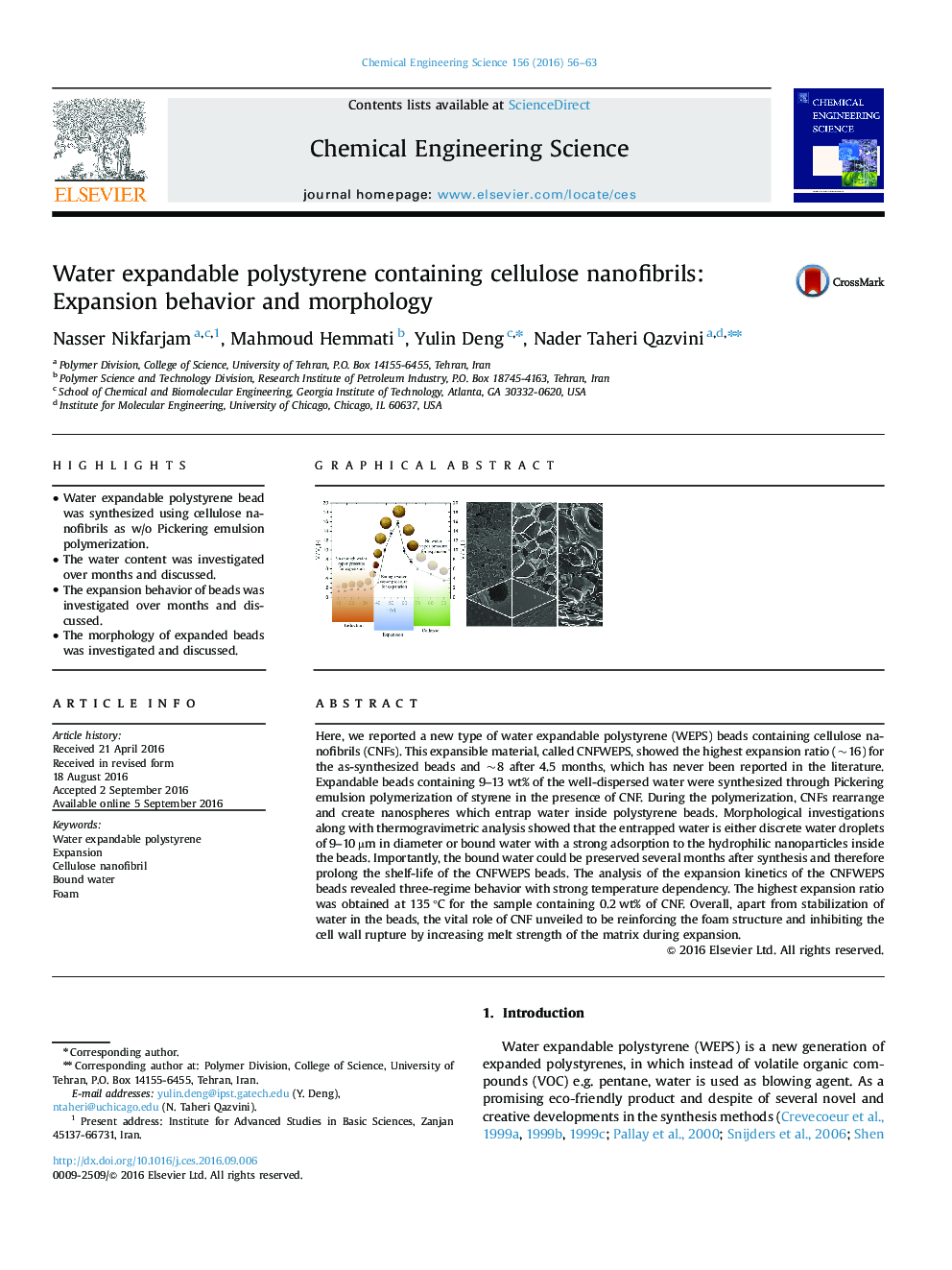| Article ID | Journal | Published Year | Pages | File Type |
|---|---|---|---|---|
| 6467793 | Chemical Engineering Science | 2016 | 8 Pages |
â¢Water expandable polystyrene bead was synthesized using cellulose nanofibrils as w/o Pickering emulsion polymerization.â¢The water content was investigated over months and discussed.â¢The expansion behavior of beads was investigated over months and discussed.â¢The morphology of expanded beads was investigated and discussed.
Here, we reported a new type of water expandable polystyrene (WEPS) beads containing cellulose nanofibrils (CNFs). This expansible material, called CNFWEPS, showed the highest expansion ratio (~16) for the as-synthesized beads and ~8 after 4.5 months, which has never been reported in the literature. Expandable beads containing 9-13 wt% of the well-dispersed water were synthesized through Pickering emulsion polymerization of styrene in the presence of CNF. During the polymerization, CNFs rearrange and create nanospheres which entrap water inside polystyrene beads. Morphological investigations along with thermogravimetric analysis showed that the entrapped water is either discrete water droplets of 9-10 µm in diameter or bound water with a strong adsorption to the hydrophilic nanoparticles inside the beads. Importantly, the bound water could be preserved several months after synthesis and therefore prolong the shelf-life of the CNFWEPS beads. The analysis of the expansion kinetics of the CNFWEPS beads revealed three-regime behavior with strong temperature dependency. The highest expansion ratio was obtained at 135 °C for the sample containing 0.2 wt% of CNF. Overall, apart from stabilization of water in the beads, the vital role of CNF unveiled to be reinforcing the foam structure and inhibiting the cell wall rupture by increasing melt strength of the matrix during expansion.
Graphical abstractDownload high-res image (382KB)Download full-size image
